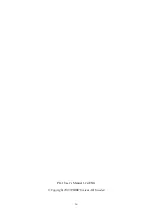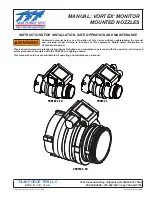
13
5. Sample Preparation
a) Determine and mark the machine direction of each sample where applicable. Be careful
not to touch the areas to be tested, or contaminate them in any other way.
b) Determine and mark the “top” and “back” sides of each sample based on the side
relevant for the application.
When the specimen thickness is not greater than 2.5 mm, cut three clean about 100 mm
long specimen strips of 15.0 ± 0.2 mm at 45° angle to the machine direction. The strips
must be free of folds, wrinkles, blemishes, watermarks and other defects not normally
inherent in the sample.
To determine the anisotropy of the surface one strip should be cut in the machine
direction, one in the cross direction and one strip at 45° angle to the machine direction
with proper markings of the specimen (e.g. MD, CD and 45).
Specimens up to 12 mm thickness can be tested if the specimen stage is removed as
described in Section 2.1.2.
d) Soft materials films or warping materials should be mounted on top of the carrier strip
supplied with your instrument (Appendix A).
6. Test Liquids
Water is the most commonly used test liquid because it is easy and safe to handle. It is still
important to know there are many different types of water (e.g. tap water, distilled water,
reagent water) and the water must be checked too.
Other test liquids than water can be used in this system as long as they can be pumped out
from the dispensing tip and form a “liquid droplet” on the specimen surface. When more than
one test liquid is used, it is recommended contamination is avoided by the use of one
dedicated dispenser for each test liquid.
The surface tension of a probing liquid can be validated using contact angles on reference
materials with known surface properties.



































